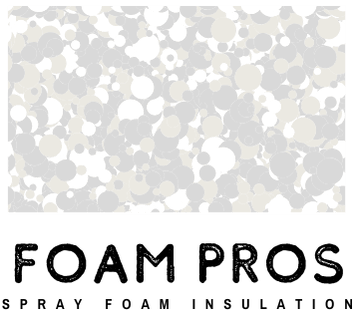We will get back to you as soon as possible.
Please try again later.
Fiberglass Insulation vs. Spray Foam Insulation
One of the more common debates in the world of attic insulation is the "Fiberglass vs. Spray foam insulation." Although fiberglass is the classic option for most American homes, spray foam seems to be the 'new kid on the block.'
When it comes to insulation, you need to understand the different types used around your house.
Understanding the pros and cons of each variant can help you make an informed decision.
To determine the better one, we need to look at both fiberglass and spray foam's pros and cons.
At the end of this article, you will easily determine which one is best suited for you.
WHAT IS FIBERGLASS INSULATION?
Fiberglass is the more type of insulation used in about 85% of American homes and businesses. It comes in batts, a thick sheet of Fibrous material.
Fiberglass insulation is made up of several tiny fibers of glass. However, it has no true air seal; it traps air bubbles and creates an insulating effect that slows down the exchange of heat between surfaced.
-
Pros
- It is easy to install
- It is less expensive
-
Cons
- It is less effective in freezing situations
- The insulation material can be inhaled during installation
- It doesn’t completely block sound
What Is Spray Foam Insulation?
Although it is a relatively new insulation method, it can be used as either the primary or supplementary insulation method.
Here’s how it works;
Spray foam is applied by spraying polyurethane foams into walls and ceilings. Subsequently, it expands and forms an airtight and moisture-tight seal.
-
Pros
- Protects homes or businesses from pests and rodents
- It can be used to seal off small openings that other kinds of insulation cannot reach.
- It is more efficient and long-lasting (does not break down as easily as fiberglass insulation).
- Spray foam is the better option for people with allergies as it blocks pollen and dust
- It blocks a lot more sound than other kinds of insulation.
-
Cons
- Spray foam comes at a higher cost, and it is considerably more expensive than fiberglass.
- It is strongly advised that you seek professional help to apply spray foam
Understanding The R-Value
You need to understand the R-value to decide which insulator is best for you. The R-value is used to determine an insulator’s effectiveness to resist airflow. The higher the number, the better.
Making Your Decision
The goal for insulation is to prevent heat transfer, making sure the air stays in or out (depending on the season). However, choosing the best insulation is not only about R-value.
It would be best if you also considered other crucial factors such as;
- Availability of space
- Your overall budget
- Climate and
- Other potential safety hazards.
As you can see, there are many pros and cons on each side. Which side are you on?
Foam Pros Saskatoon
Foam Pros Saskatoon is a specialist spray foam insulation company that services the surrounds of Saskatoon. We specialize in expanding foam insulation for ceilings and walls in both commercial and residential spaces.
Privacy Policy Contact Us More Resources
All calls from our site are sent to a qualified contractor.
Built by RenovateROI - A Home Contractor Marketing Company
